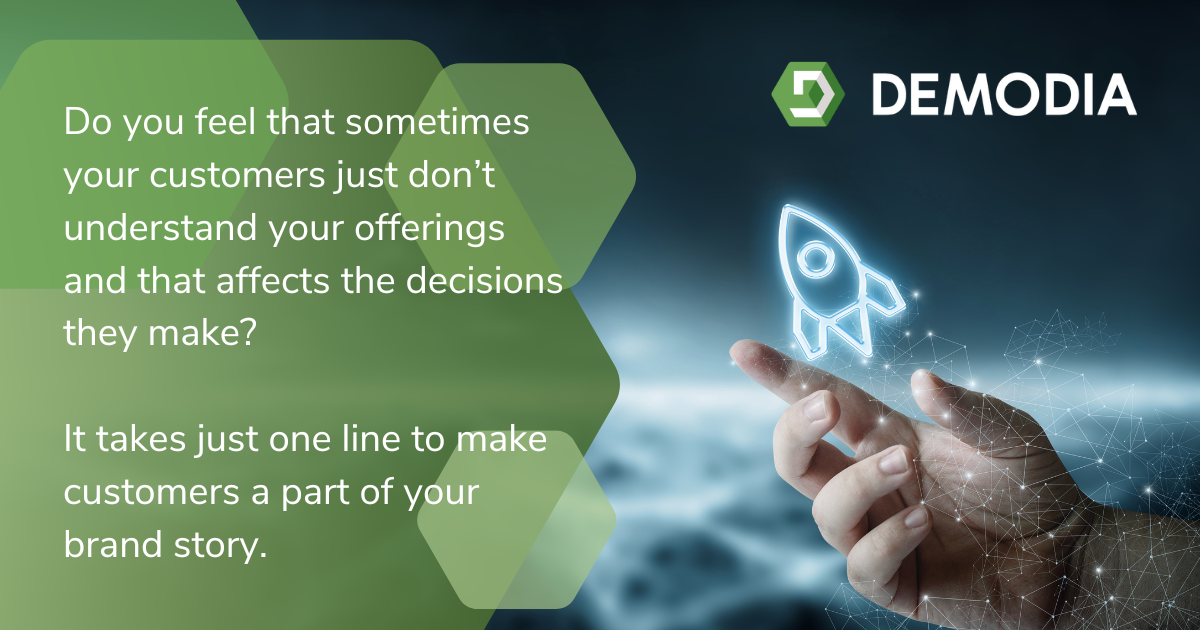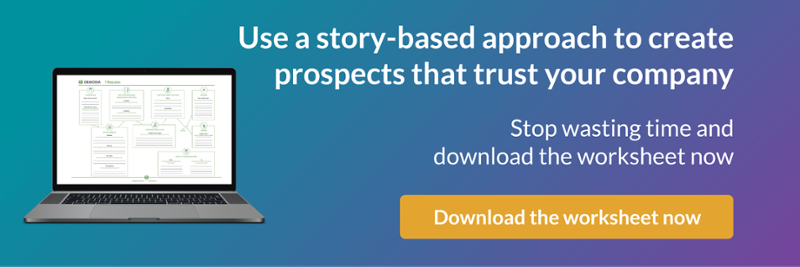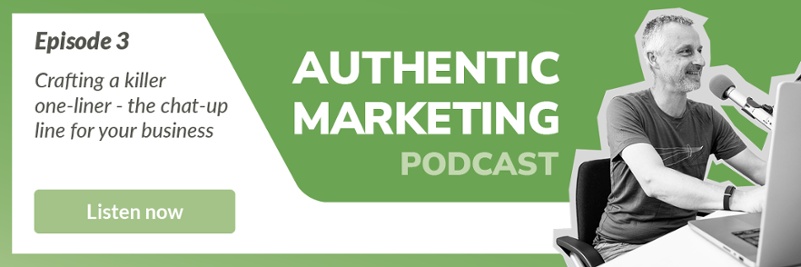3 steps to a One-Liner that will catapult your corporate communication into the Champions League

Time for a quick pop quiz.
To which films do these summaries (a.k.a. loglines) belong?
- "There are 3.7 trillion fish in the ocean. You are looking for one."
- "A nun comforts a condemned murderer on death row, feeling compassion for the killer and the families of his victims. "
- "A young F.B.I. agent must confide in an imprisoned and manipulative killer, and with his help, find another serial killer who skins his victims."
Three sentences, and you probably immediately knew which films they were about. A good logline not only informs you about the plot but also describes the setting of the story. In any pitch in Hollywood, the logline decides whether the meeting is over after a few seconds or whether the whole presentation is listened to.
In marketing, the counterpart to the logline, the one-liner, determines whether you manage to arouse interest (or not). It is essential that the one-liner not only reiterates facts but also generates emotion at the same time because that is exactly the secret of storytelling.
Why does storytelling work?
Stories synchronise the listener's brain with the storyteller's brain. When the brain sees or hears a story, its neurons fire in the same pattern as the storyteller's brain. This is called neural coupling. Mirror neurons create coherence between the brains of the speaker and the listener. In storytelling for marketing, this is called narrative transportation.
When you invite your customer into your story, their thinking and feelings about your brand are influenced. This, in turn, pays off in the buying decision. Because here, too, the science is clear. Harvard professor Gerald Zaltman proved: emotions are the real driving force behind our buying behaviour and decision-making.
The better the story is told, the more the listener identifies with the story, and this also works in marketing. The most important thing here: show the customer that he is part of your story. In our storytelling method, he is even the protagonist.
Every story lives from the heroic journey of its protagonist. James Bond wants to save the world, Jason Bourne wants to find out his identity and Pretty Woman wants to go to college. Good storytelling only works if it is clear what the hero wants. In the same way, you need to know what your customer wants.
Do you have dozens of products and offer many solutions to problems? You can explain that once you have built a relationship with your customer. James Bond doesn't just have to save the world; he has to fight a few personal feuds along the way. However, you'll learn all this after you've sunk into your cinema seat. It's not the detail that lured you into the cinema; it is the big picture.
How do you create a good one-liner that skilfully combines information and emotion?
The formula for a successful one-liner
The formula is simple and consists of three parts:
The problem, the solution and the result.
Part 1: The problem
Why should you talk about the problem?
Without a problem or conflict, there is no story.
Example: I came into work late today, did some work and went home. That is a list and not a story.
However: I was late for work today, and my boss made a cocky remark. I immediately exploded in rage and shouted at him, "Your arrogant manner and incompetence have been getting on my nerves for years."... That's where it gets interesting, and I'm sure you'd like to know if I was sacked the same day.
With the problem, the emotions in your brain start to work and often, we then associate a brand with the solution to the problem.
A: I'm late for my meeting.
B: Why don't you take an Uber?
So if you want to be remembered, you should associate your product or service with solving a customer problem.
Recap: 3 reasons why you should start your one-liner with the problem.
- the problem draws the customer into your story
- the problem creates a relationship with your product and illustrates its added value
- the problem stays in the customer's mind

Part 2: The solution
A good story doesn't stop at the problem but also offers the solution.
As detailed in our podcast on the problem: Each of our buying decisions should solve a problem.
In doing so, one connection is crucial: the solution must fit the problem precisely so as not to create dissonance.
To put it bluntly: imagine James Bond saving the moon instead of the world. You would head away from this story wholly dissatisfied.
Part 3: The result
The last part of our formula deals with the result - the crowning glory, so to speak, of your whole story and thus your one-liner. Here you offer the solution and its positive effects.
In summary: The three steps to the one-liner
- Identify your client's (biggest) problem
- Explain the solution you have for this problem
- Describe the successful ending of your client's story
Now you just need to connect all three parts - problem, solution and outcome. (Although you don't have to pack all the steps into a single sentence dogmatically. The main thing is that your message is clear and understandable).
For clarification: our one-liner
Many B2B organisations don't know how to implement storytelling in digital marketing (problem). At Demodia, we provide a proven framework (solution) that generates increased customer engagement (results).
Some more pro tips:
- Don't use too many words
- Refrain from using insider language
- Use your brand name in the solution to create associations
- Be precise and clear
If you're looking for even more examples and tips on oneliners and messaging, we recommend our blog for more reading.
We're happy to work on your messaging with our storytelling method. Simply book a no-obligation appointment here.
